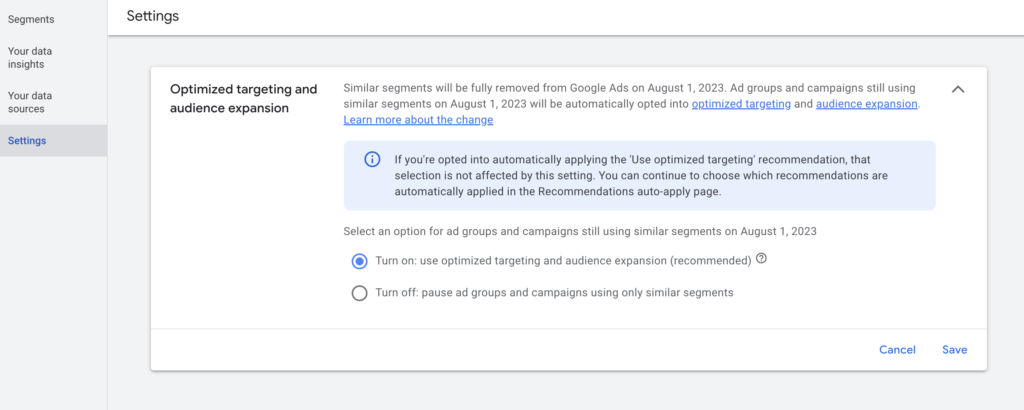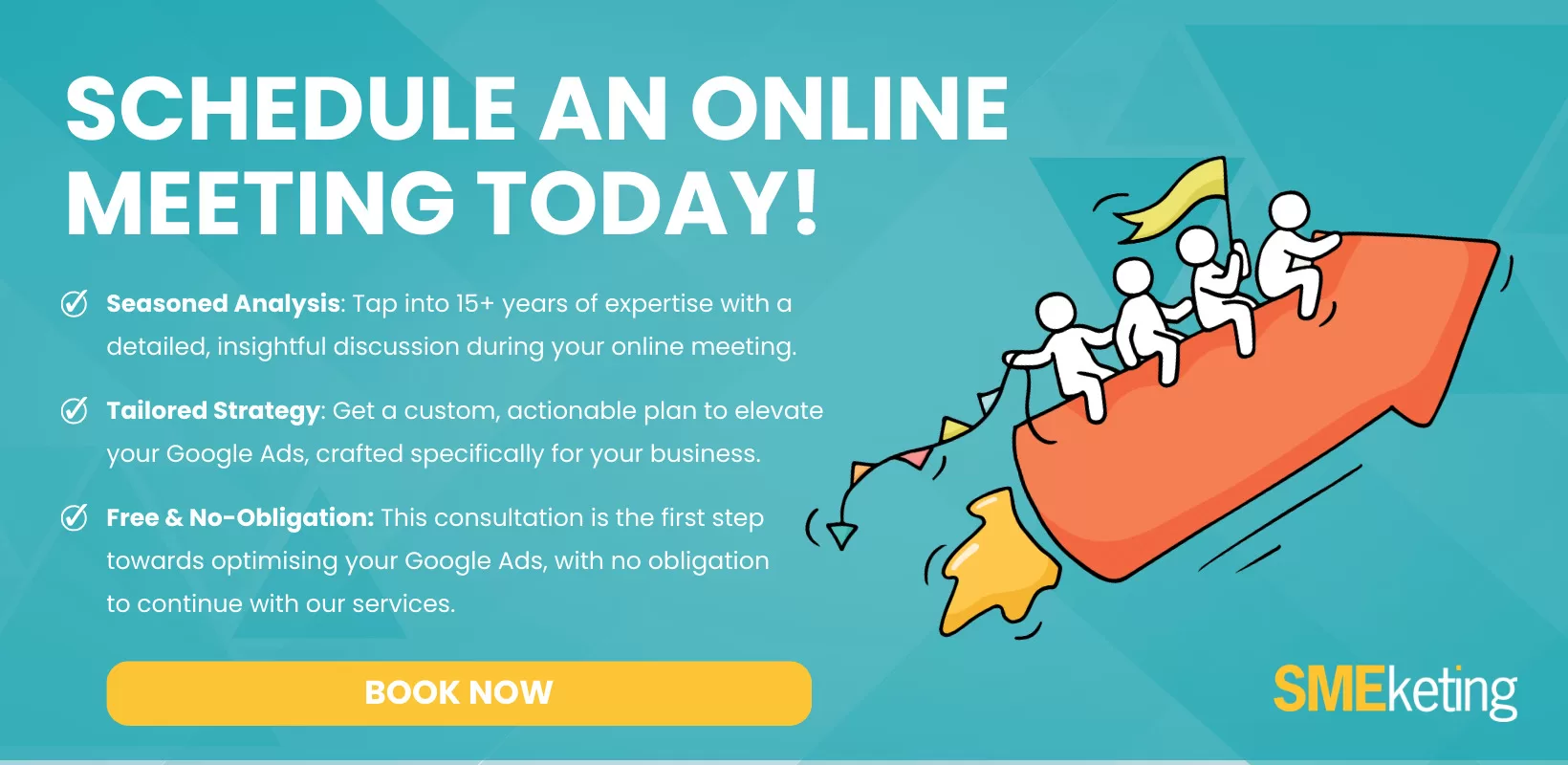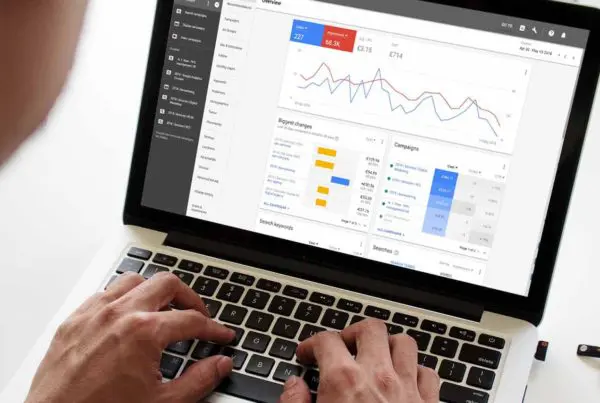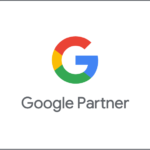As a Google Ads expert specialising in driving growth for lead generation businesses, I understand the importance of keeping pace with the evolving digital landscape. In the dynamic world of online advertising, we’re about to witness a significant transition.
Starting from the 1st of August 2023, Google’s Similar Audiences will be making way for more advanced strategies, namely Optimized Targeting and Audience Expansion.
This article aims to delve deep into this shift, explaining what this means for your business and how you can adapt and thrive amidst these changes.
Understanding Google’s Transition from Similar Audiences
Google has been a game-changer in the digital advertising space for years, and one of its key offerings has been the Similar Audiences feature. This tool has allowed businesses to reach audiences similar to their existing customers, thereby expanding their reach and fostering business growth.
However, in November 2022, Google announced its plans to phase out Similar Audiences and replace it with more advanced and potentially efficient strategies—Optimized Targeting and Audience Expansion.
This transition, while seeming drastic, is expected to offer businesses more robust and targeted ways to reach their audience. But how exactly does this transition play out, and what should businesses prepare for?
The Transition Timeline – Understanding Google’s Three-Phase Plan
Google’s approach to this transition has been methodical and gradual, ensuring businesses have ample time to adapt. The transition process has been divided into three phases:
- Phase 1: Announcement (1st November 2022):
Google formally announced its intention to phase out Similar Audiences. This was the first alert for businesses using this feature, signalling the need to begin preparations for the upcoming change. - Phase 2: Initiation of the Transition (1st May 2023):
In this phase, Google stopped generating Similar Audiences and ceased adding them to new campaigns. However, existing campaigns were allowed to retain Similar Audiences until 1st August 2023. This step marked the start of the actual transition process. - Phase 3: Full Transition (1st August 2023):
The full transition kicks in on this date. Google will replace Similar Audiences with Optimized Targeting and Audience Expansion in all campaigns. While this marks the end of Similar Audiences, businesses will still be able to access historical data from Similar Audiences in existing campaigns.
This three-phase approach from Google offers businesses a structured roadmap to plan their transition and adapt to the new tools.
Adapting to the End of Similar Audiences – Key Strategies
With Similar Audiences being phased out, it’s time for businesses to familiarise themselves with and leverage the new tools – Optimized Targeting and Audience Expansion.
Optimized Targeting
In Optimized Targeting, Google uses a variety of data points to find conversions beyond your set audience targeting. While this should ideally yield effective results, real-life experiences might show inconsistencies due to the algorithm’s autonomous working. However, adding targeting signals to guide the algorithm can make this tool more effective.
Audience Expansion:
Unlike Optimized Targeting, Audience Expansion is less reliant on the algorithm. Here, Google seeks additional conversions by expanding to audience segments that are similar to your manually selected segments.
On the whole, while both tools aim to extend your reach beyond the current audience, Optimized Targeting tends to provide broader targeting than Audience Expansion.
Important Considerations for Businesses during this Transition
As businesses navigate through this shift, there are several key considerations they need to keep in mind:
First-party Audience Data:
Your first-party audience data (e.g., customer lists) will become a significant factor in Optimized Targeting and as a targeting criterion for Audience Expansion. This underscores the importance of maintaining high-quality, reliable first-party audience data.
The more accurate and comprehensive your data is, the more effectively these tools can function.
Opting Out:
If you prefer not to utilise these new features, Google allows you to opt out via the settings page under Audience Manager in Google Ads. However, bear in mind that if you opt out, any campaigns and ad groups that solely target Similar Audiences will be paused automatically. Therefore, it’s important to ensure your campaigns are compatible with the new features before the transition deadline.
Preparing for the Post-Similar Audiences Era
Transitioning from a familiar tool to new ones can be worrying. Here are some strategies that can make this shift smoother and help you maximise the benefits of the new tools:
- Invest in High-Quality First-Party Audience Data: The foundation of effective Optimized Targeting and Audience Expansion is reliable first-party audience data. The richer and more detailed your data is, the more accurate and far-reaching your audience targeting can be. So it’s important to focus on gathering, maintaining, and analysing high-quality first-party data.
- Understand Optimized Targeting and Audience Expansion: The key to effectively leveraging these new tools is understanding how they work, their strengths and limitations, and their best applications. Take the time to learn about these tools, seek expert advice, and experiment with different strategies.
- Test and Analyse Your Data: Data-driven decisions are at the heart of successful digital marketing. Before fully transitioning to the new tools, run pilot campaigns to see how they perform. Collect and analyse the resulting data to understand the effectiveness of these tools for your business and identify any areas for improvement.
- Make Data-Driven Decisions: Once you’ve gathered and analysed data from your test campaigns, use this information to shape your strategies. Adjust your targeting, campaign settings, and marketing messages based on what the data indicates.
Final Thoughts: Looking Beyond Similar Audiences
While there is no direct substitute for Similar Audiences, Optimized Targeting and Audience Expansion offer fresh avenues to engage with audiences. Yes, there will be less control, and spend could become more varied, but the key to thriving in this changing landscape is to adapt, innovate, and push ahead.
Despite these changes, the fundamental principles of digital marketing remain the same – understand your audience, reach them effectively, and offer value. Whether it’s Similar Audiences, Optimized Targeting, or Audience Expansion, these are merely tools to help you achieve these goals. The real success lies in how you leverage these tools to connect with your audience and grow your business.
And So…
In conclusion, the transition from Similar Audiences to Optimized Targeting and Audience Expansion represents a significant shift in Google’s digital advertising approach. It is essential for businesses to understand this change, adapt their strategies, and explore new opportunities that these tools provide.
Unlock the Power of Google Ads with the Help of an Experienced Google Ads Agency
Are you worried about the loss of Similar Audiences? Is your current Google Ads agency not supporting you in this area?
As a Google Ads agency in Southampton, Hampshire, we are positioned perfectly to help business owners, MDs and sales/marketing managers with their Google Ads. Get started today with our free Google Ads Growth Review!
- How to Do Keyword Research for Google Ads - January 15, 2024
- A Comprehensive Guide to Google Ads for B2C Businesses - January 8, 2024
- How to Write Calls to Action (CTAs) for Google Ads - December 25, 2023








